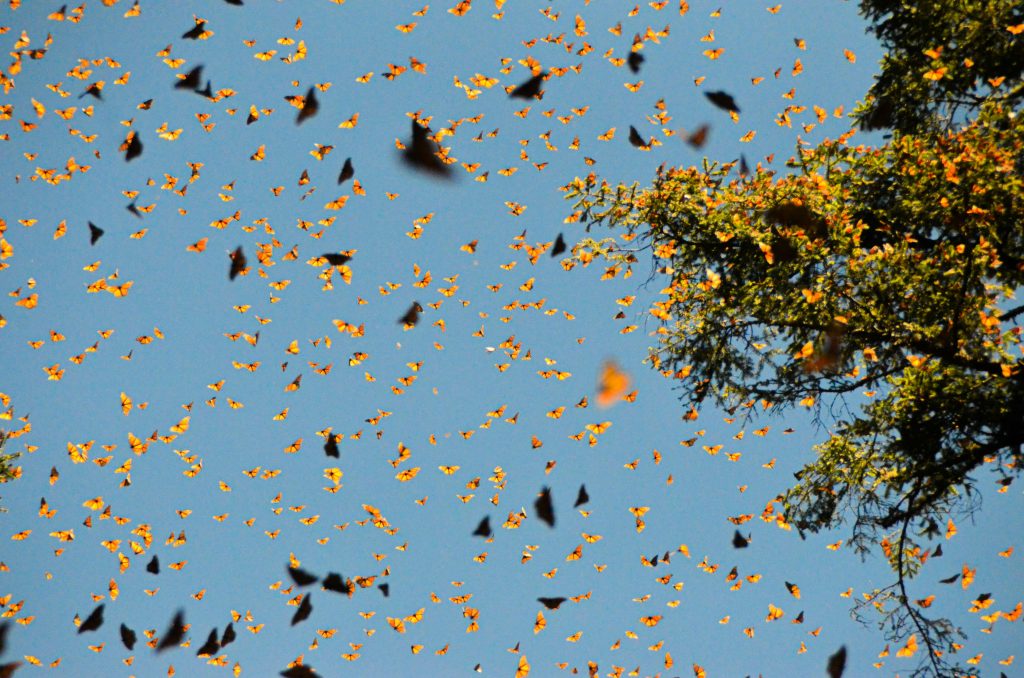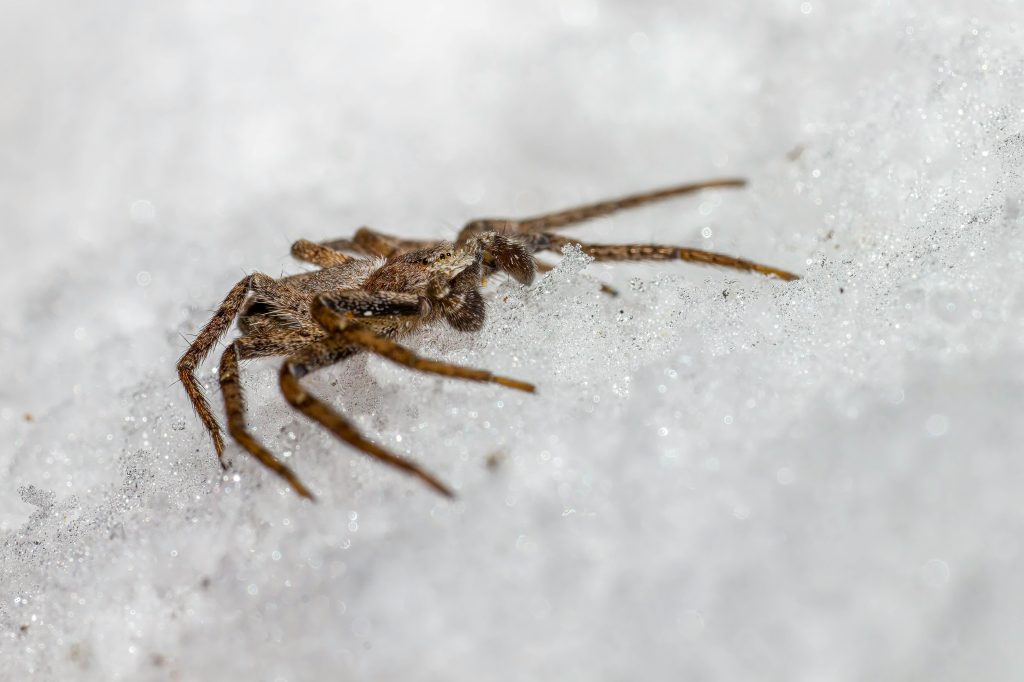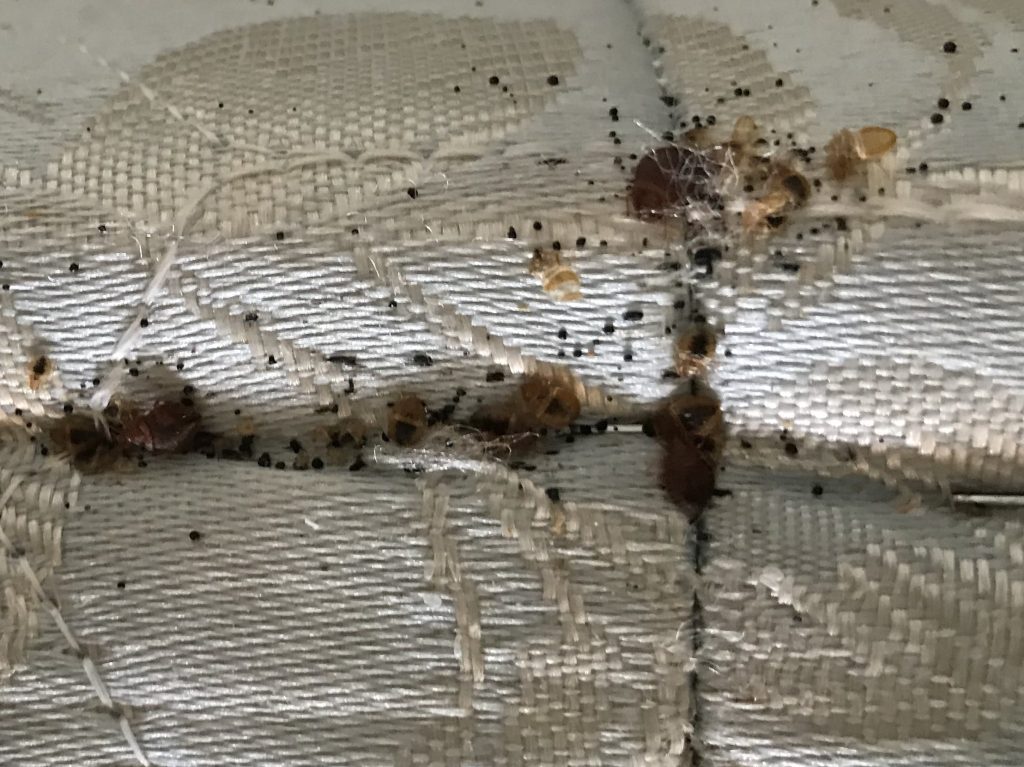As the temperature drops and the winter season approaches, you might think your pest problems from summer are behind you. But think again! Winter in Washington and Oregon brings its own set of pest challenges, with certain insects staying active even in the colder months. From understanding what pests are still active to knowing what they eat and whether they bite, staying up to date is important to protecting your home during the colder season.
In this blog post, we’ll explore the top cold-weather pests in Washington and Oregon regions, their habits, and how they can impact your home this winter. Stay ahead of these critters invading your home with our guide to the bugs that thrive even when it’s freezing outside!
Where Do Bugs Go During the Winter?
As temperatures drop, you might notice fewer bugs buzzing around your home or yard. But where do they go during the winter? While some pests appear to be out of sight, they don’t actually disappear completely. Instead, they use a variety of strategies to survive the cold months.
1. Hibernation
Many insects go into a dormant state called diapause, similar to hibernation. During this time, their metabolic rates slow down, allowing them to conserve their energy. You’ll often find hibernating bugs buried away under rocks, in tree bark, or even in soil. Common hibernators include ladybugs and certain types of spiders.
2. Migration
Some bugs, like the monarch butterfly, avoid the cold weather by migrating to warmer climates. These long journeys make sure they can continue feeding and reproducing, returning north when spring arrives.

3. Sheltering Indoors
Unfortunately, your cozy home can become a winter safe haven for pests like ants, cockroaches, and rodents. These pests’ main goal is to seek warmth, food, and shelter, which is why infestations often increase during the colder months.
4. Overwintering as Eggs or Larvae
Certain insects, like mosquitoes and moths, lay eggs or enter the larval stage before winter. These dormant forms are well-adapted to withstand freezing temperatures and hatch when the weather gets warmer in the spring.
5. Burrowing Underground
Beetles, termites, and some species of ants burrow deep into the soil to escape the cold. These underground shelters provide protection from frost and predators until the weather warms up.
Understanding where pests go during the winter can help you take preventative measures to protect your home. Seal entry points, maintain a clean environment, and consider pest control services to keep unwanted guests at bay.
Winter might slow pests down, but it doesn’t stop them. Stay prepared to ensure they don’t make your home their seasonal retreat!
Bugs Active During the Winter
There are many active bugs during the winter months that may be invading your home as we speak. While some people may think these creatures are in hibernation mode, some pests such as rodents, bed bugs, spiders, stink bugs, and cockroaches remain active all year long. Just because you may not see any pests around your home, doesn’t mean they aren’t active. There are an abundance of insects that remain active during the colder months. Here are some pests you may want to keep an eye out for.

1. Rodents- Rodents are one of the most common pests many find are active in their home all year round, especially during the winter months. As temperatures start to cool down, rodents (mice, rats, squirrels) are often looking for a warm home to nest in. Rodent’s main goal is to survive during the colder months by finding shelter and food. Though they are active all year round, they are nocturnal so you may not see them running around during the day so it’s important to check for signs of an infestation. You may notice rice sized droppings in your kitchen, closets, and other warm areas in your home. This is because mice are looking to nest and find food and water. The best prevention for rodent infestation is to eliminate the food source by properly sealing pantry foods, keeping your trash cans empty and clean, and sealing cracks and holes in your home.
2. Spiders – Did you know spiders are cold-blooded creatures? This means that spiders are resilient to colder temperatures. Spiders are often found in dark, cluttered, unused spaces. Think of your attic, closets, and basements. The best prevention for keeping spiders out of your home is to regularly delcutter, dust, and clean your spaces that are often dark and not used frequently
3. Bed Bugs- These bugs are one of the most common pests that are active during the colder months. Though their activity during the winter may become slower, they are still actively causing problems for homeowners. Because most people are doing a lot of traveling during the winter, it’s common for bed bugs to hitch a ride on furniture or clothing. Prevention is key to avoiding these problems. It’s important to regularly inspect your bedding, furniture, and suitcases. You should also wash your beddings in hot water, seal any cracks and crevices, and dust your home often. If you see signs of bed bugs, it’s best to contact pest control to help prevent any further infestation.
4. Stink bugs -Stink bugs are one of the few pests that remain active during the winter, although they prefer to do so indoors. As it gets colder outside, the shield-shaped insects seek out warm, sheltered places to survive, often finding their way into homes through cracks, vents, or poorly sealed windows and doors. Once inside, stink bugs are mostly inactive, but their presence can still be a nuisance, especially if disturbed, as they release a foul odor as a defense mechanism. While stink bugs don’t bite or cause any home damage, their habit of gathering in large numbers can be alarming. Preventing their entry with proper sealing and regular pest control measures is key to keeping them out during the colder months.
Common Locations Where Pests are Active
During the winter months, pests seek warmth and shelter, often finding their way into homes and businesses. Common locations include basements, attics, crawl spaces, and inside walls where they can hide undisturbed. Kitchens and pantries are also hotspots that pests like rodents and cockroaches search for food sources. Outdoors, woodpiles, garages, and sheds can become nesting sites. Knowing these common locations helps you stay vigilant and tackle infestations early.
Insects that Bite in the Winter and What to Look Out For
Though many insects slowdown in the winter, some insects remain active—and do indeed bite. Fleas and bed bugs are notorious for their resilience during colder months. Bed bugs thrive in warm interiors, while fleas can appear on pets or in rugs. Watch out for itchy red bites or signs of activity like shed skin and droppings. Preventative measures, like cleaning and inspecting your bedding or pet areas, can help you stay ahead of these pesky pests.

Bugs that Fly During the Winter
While fewer bugs fly in winter compared to summer, some species remain active. Cluster flies and winter crane flies are common examples. Cluster flies often gather in windows and attics, seeking warmth, while crane flies might emerge during mild spells, mistaken for large mosquitoes. If you notice flying insects in your home this winter, it’s important to identify their entry points and address the problem quickly.
What are Bugs Eating During the Winter
Winter-active pests adjust their diets based on availability. Indoors, cockroaches and ants hunt for crumbs, pet food, or pantry items, while rodents target mostly grains and packaged goods. Outdoors, insects like termites can continue feeding on damp or decaying wood. By understanding what pests are looking for, you can take steps like sealing food containers and eliminating access to water and debris to deter them.
How to Prevent Pests this Winter
Preventing pests during the winter starts with taking immediate action. Seal cracks and gaps in walls, doors, and windows to block entry points. Store food in closed containers and clean up crumbs and spills to reduce pests in your home. Reduce clutter to eliminate hiding spots, and keep firewood stored away from your home. For extra protection, consider professional pest control services to inspect your property and implement seasonal pest management strategies.
As the temperatures drop, the warmth and shelter of your home become the best place for winter pests in Washington and Oregon. From rodents and spiders to stink bugs and cluster flies, these little critters can disrupt your comfort and pose risks to your home. Staying proactive with prevention measures, such as sealing entry points, managing moisture, and scheduling regular pest control services, can help keep these unwelcome guests at bay. With winter season arriving, don’t hesitate to reach out to Interstate pest management to protect your home and enjoy a pest-free winter season. Contact us today so we can get you scheduled for a visit.